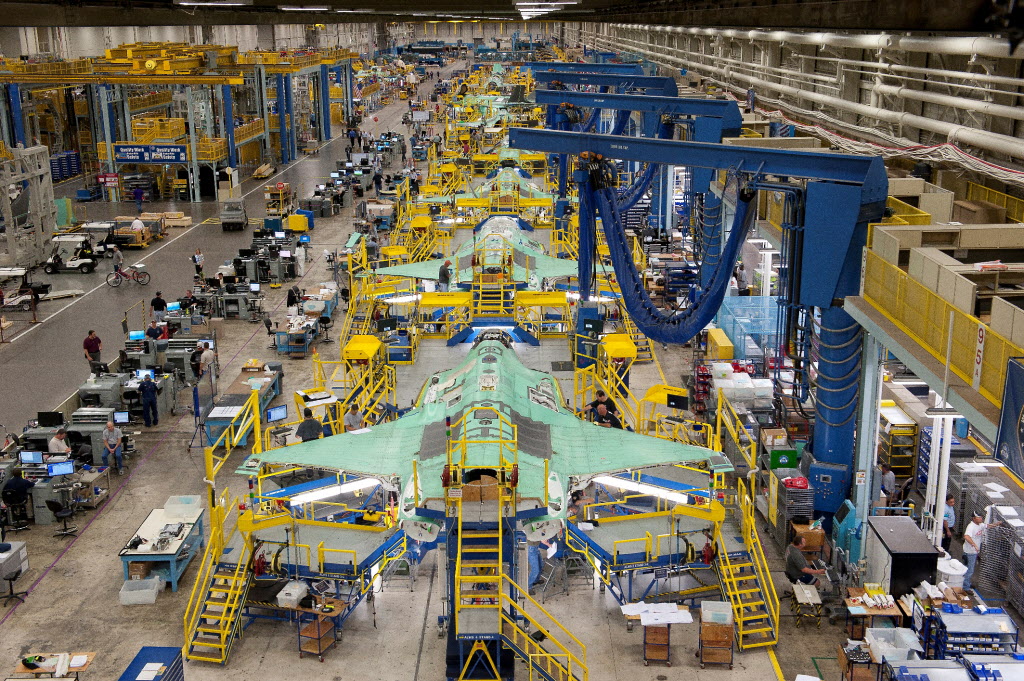
According to a compilation of prestigious defense news website Defense News, the 6 largest US arms trading corporations still have positive growth in 2020 despite the pandemic.
From 2020 to now, besides COVID-19, the increasing tension between countries and regions has made many economic sectors difficult. However, the defense industry, especially American companies, continued to do well.
Since the end of the war, the demand for weapons has remained high and the largest suppliers are still American companies. According to Defense News’s ranking of the Top 100 largest defense companies in the world by revenue in 2020, the US leads the world with 6 companies in the top 10. They include Lockheed Martin, Raytheon Technologies, Boeing, Northrop Grumman, General Dynamics, and L3Harris Technologies.
Except for Boeing, whose revenue from the defense industry accounts for only 56%, the remaining names all have over 80% of revenue from this segment.
In 2020, 5 out of 6 companies above still have positive growth. These are also companies whose shares have risen sharply amid the escalation of the war in Ukraine and Russia. In just one month now, Northrop Grumman is up 25.5%, Lockheed is up 16%. The remaining 4 companies share prices increased by 5 – 10% during the time of intense war.
Companies with defense revenues of more than $10 billion. Source: DefenseNews
From 2019 to 2020, all six of these companies have grown in revenue by 2% (5% if the merger into Raytheon Technologies is included), despite an 18% drop in total profits. This reduction was largely due to excessive costs to repair Boeing’s KC-46A tanker and VC-25B aircraft, causing the company’s profit to drop 41% in 2020. In contrast to the gloomy situation. protein at Boeing, the remaining five companies have increased revenue.
Led by Lockheed Martin with revenue growth of 9%, or $5.6 billion, bringing total company revenue in 2020 to $62.5 billion. Prior to that, Lockheed Martin also had a revenue increase of $6.1 billion in 2019. In just two years, the company’s revenue increased by $11.7 billion, or 20%.
The reason for this success is due to the promotion of production of stealth fighter models of the F-35 series, an expensive product of the company. In 2020, the company’s production of F35 aircraft reached a record 170. Thanks to the optimization of production costs, the price of each F35 also decreased by 13% in the period of 2019 – 2020.
In addition to the F35, Lockheed Martin is also the manufacturer of the THAAD missile defense system, the F-22 Raptor, F-117, and the U-2 spy plane.
In second place is Raytheon Technologies – a new legal entity formed from merging two big names, Raytheon Company with United Technologies, with total revenue of 42 billion USD. Raytheon is the manufacturer of many famous missiles such as Tomahawk, Stinger anti-aircraft missile or Javelin anti-tank missile being mentioned a lot in Ukraine.
Notable growth also came from Northrop Grumman. In 2020, the company increased revenue by $2.8 billion (or 9%) to $31.4 billion. In 2020, Northrop Grumman also signed a $13.3 billion contract with the US Air Force to develop an intercontinental nuclear missile system for its Trident II submarine.
According to a Defense News list, the largest defense enterprises outside the US include the Aviation Industry of China ($25 billion) and China State Shipbuilding ($13.4 billion) of China, and BAE Systems of Britain (23 billion USD) ,5 billion USD), Airbus (12 billion USD)… In total, there are 15 companies with revenue of over 10 billion USD.
Unlike Boeing, Airbus’ revenue from defense products only accounts for a small proportion of 20% of total revenue.
According to PwC’s Aerospace and Defense industry report 2021, during the COVID-19 period, the defense industry is still standing and is expected to grow strongly. The first cause pointed outcomes from the global tension situation in many regions. The Biden government for the fiscal year 2021 intends to increase the defense budget to $715 billion from $704 billion in 2020.
In Europe, the UK, Germany, and France have also confirmed increases in defense budgets. Responding to this new situation, the military-industrial market has shifted its business campaign to the direction of promoting investment to expand its scale. The game is therefore increasingly focused on the big guys. The most obvious examples are the major M&A deals between Lockheed Martin and Aerojet Rocketdyne, Harris merging with L3 Technologies, Northrop Grumman merging Orbital ATK, Raytheon merging United Technologies, and General Dynamic acquiring CSRA.
Source: Nhip song kinh te
Related
Source: Vietnam Insider
